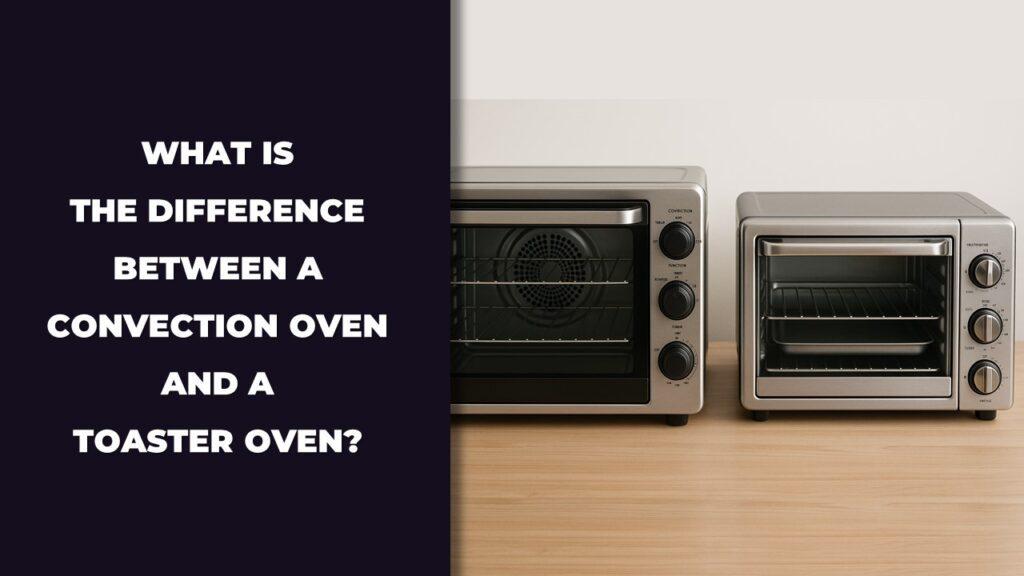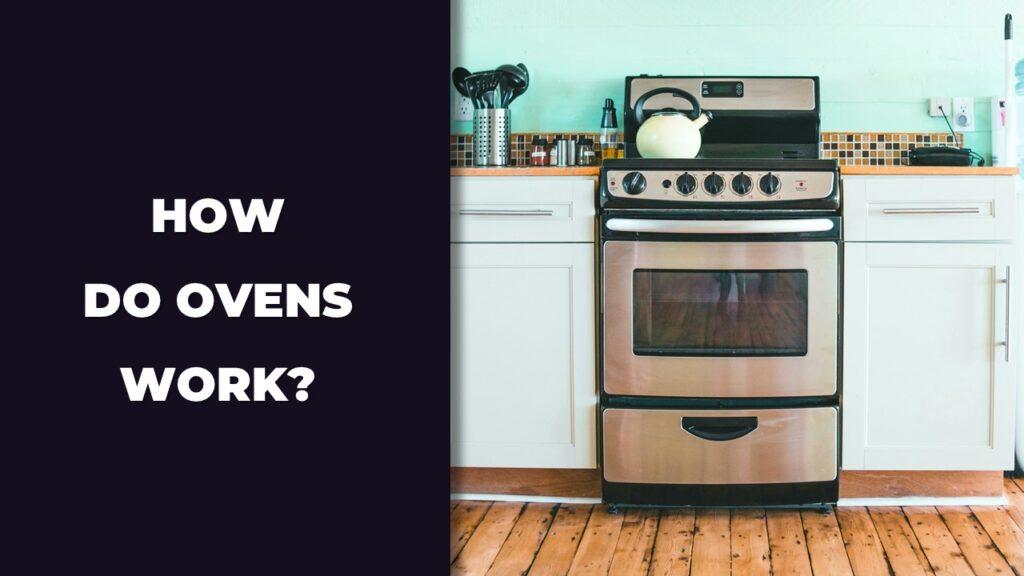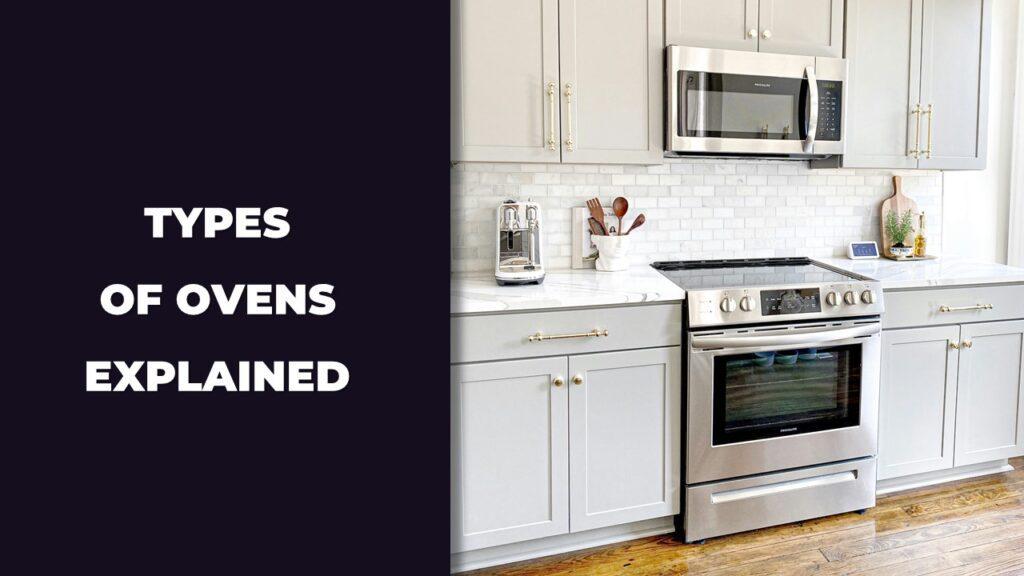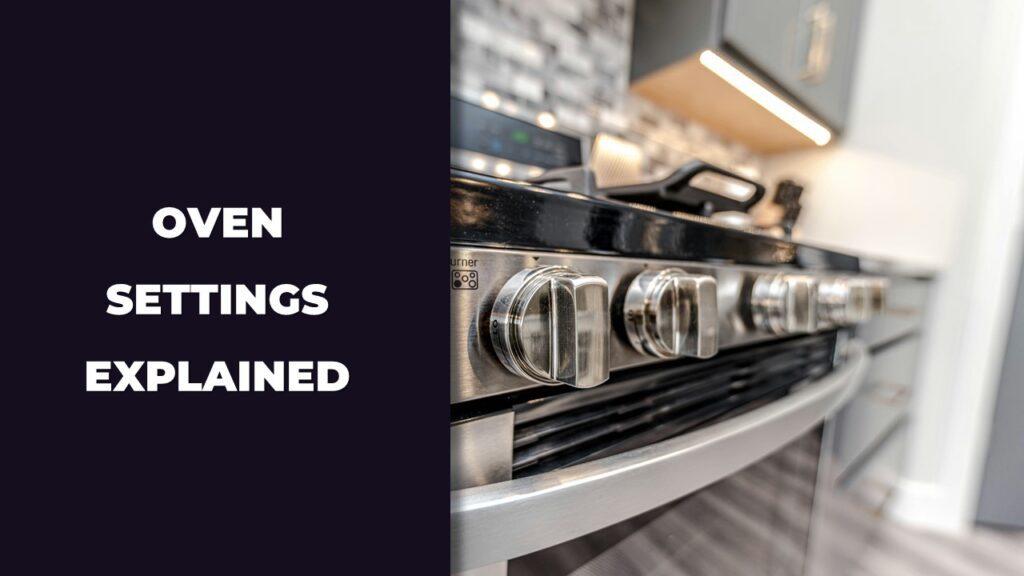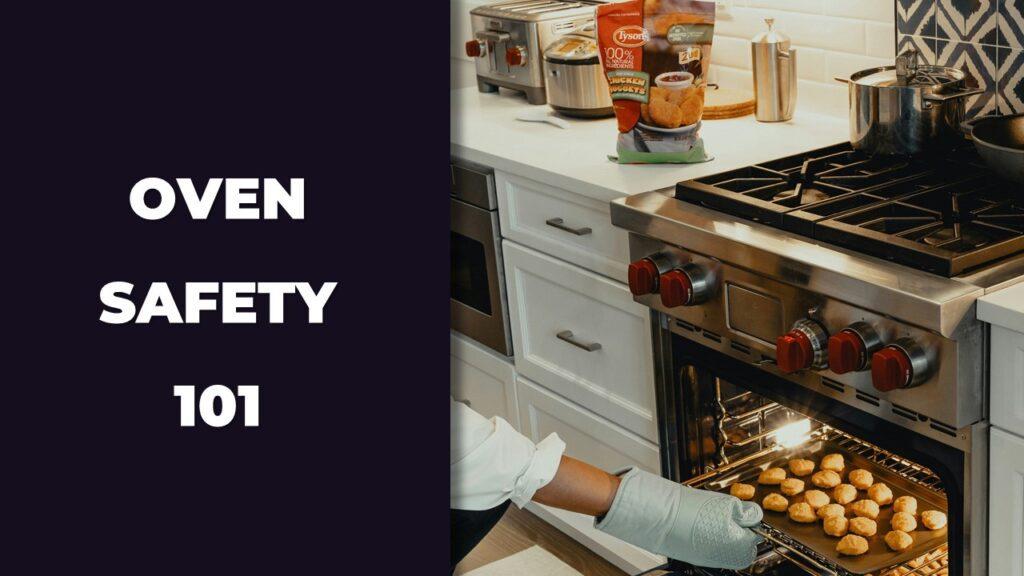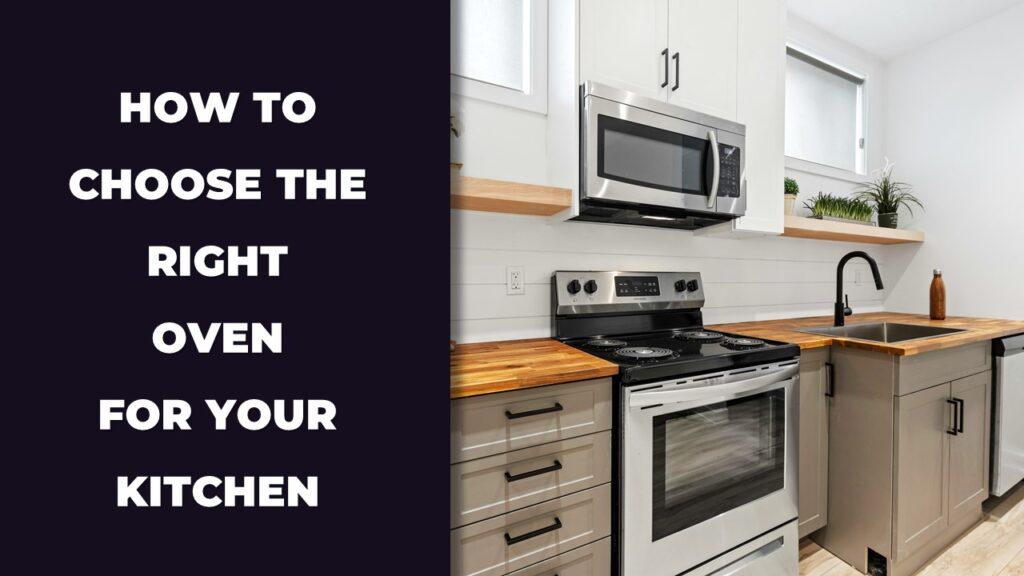
An oven maintenance checklist is a simple routine that helps keep your oven clean, safe, and working properly. It includes wiping spills, checking door seals, cleaning racks, testing heating elements, and making sure your oven heats evenly. By doing a few small tasks weekly, monthly, and yearly, you can avoid major repairs and keep meals cooking the way they should.
This article will walk you through exactly what to check and when to do it. We’ll break everything down into easy steps, so even if you’ve never cleaned an oven before, you’ll know what to do.
Why Regular Oven Maintenance Matters
Oven maintenance helps your oven cook evenly, stay safe to use, and last longer. It’s not about deep cleaning every weekend. It’s about checking the right parts at the right time: door seals, heating elements, and the thermostat. A few small steps can prevent most oven problems before they happen.
You probably use your oven more than you realize. Baking dinner, heating up leftovers, making weekend snacks — it all adds up. When food spills, door gaskets wear out, or grease builds up, your oven has to work harder. That’s when things burn, or worse, stop working mid-cook. Skipping small care steps often leads to big, expensive headaches later.
This maintenance isn’t about perfection. It’s about keeping your kitchen safer and your cooking less stressful. From wiping spills to checking how evenly the oven heats, every small habit helps. If you’ve been putting this off because it sounds like a chore, don’t worry. You’ll see how simple it can be.
Weekly Oven Maintenance Tasks
You don’t need to wait for your oven to start acting up before giving it some care. A quick weekly routine can help prevent those annoying smells, uneven bakes, and burnt leftovers that make cooking feel frustrating. If your oven smokes when empty, if you can’t see through the glass, or if the stovetop just feels off—these little signs are trying to tell you something. Here’s how to handle them, calmly and easily.
Wipe Spills And Crumbs Immediately
If your oven smells burnt before you’ve even placed food inside, chances are something dripped last time you cooked. That tiny cheese bubble or oil splatter can turn into a smoky mess fast.
- Wait For The Oven To Cool: Never clean while it’s still hot—give it time.
- Use A Damp Cloth Or Sponge: Wipe down fresh spills from the base, walls, and under the racks.
- Soften Stuck-On Bits: Lay a warm, wet towel over crusted food for 15 minutes—no scraping needed.
- Tough Spots?: Make a paste of baking soda and water; apply, wait, then wipe gently.
- Avoid Harsh Cleaners: Chemical sprays can damage the interior or leave behind strong fumes, especially in ovens without self-cleaning mode.
Clean The Oven Door Glass
If you’ve ever squinted through a greasy window, you know how frustrating it is not being able to check your food. Grease fogs up that glass faster than you’d think, even with light use.
- Make A Gentle Scrub: Mix baking soda with water into a thick paste.
- Apply And Let It Sit: Spread the paste across the inside glass and leave it for 10–15 minutes.
- Wipe With A Soft Cloth: Use a microfiber towel or soft sponge to lift away the grime.
- Check Your Manual: Some ovens let you open the door panels—only attempt this if clearly instructed.
- Never Use Metal Tools: They can scratch the glass or damage the door seal.
Clean The Stovetop Or Cooktop
Burners acting strange? Taking longer to heat? You’re likely dealing with old spills clogging things up. This is one of the most used parts of your kitchen—it deserves regular attention.
- Gas Burners: Remove burner grates and caps, then soak them in hot, soapy water for 20–30 minutes.
- Electric Coils: Gently lift the coils and clean underneath with a damp cloth—don’t tug too hard.
- Surface Cleaning: Wipe the whole stovetop with a non-scratch sponge and dish soap.
- Greasy Knobs?: Pull them off and clean around the base; you’d be surprised what hides there.
- Dry And Test Burners: Let everything dry fully, then turn on each burner briefly to check for even flames or proper heat.
Monthly Oven Maintenance Tasks
Monthly oven maintenance covers the things that don’t need weekly attention but still matter if you want consistent baking and even heat. These tasks are simple and don’t take much time, but skipping them for months can lead to longer cook times, smoky smells, or food that’s burnt on the outside and raw in the middle. If you’ve forgotten to do these before, it’s okay. No guilt—just jump in now and reset the routine.
Run The Self-Cleaning Cycle (If Available)
If your oven smells greasy, smokes a little when you preheat, or has dark spots on the walls, it might be time to run the self-cleaning mode. This feature gets extremely hot to burn off grime, turning it into ash you can easily wipe out—but you need to prep first.
- Remove The Racks: Take them out before starting the self-cleaning mode; the heat can damage their coating.
- Check The Oven Is Empty: Look inside for forgotten foil, pans, or utensils.
- Ventilate The Kitchen: Open windows or run the exhaust fan to deal with heat or smell.
- Stay Nearby: Don’t leave the house while it’s running—just in case something goes wrong.
- Wipe Out The Ash: Once the cycle ends and the oven cools, use a damp cloth to clean the base.
- Avoid Sprays: Never use chemical cleaners before or after using self-clean mode; it can damage the interior.
Clean The Oven Racks Separately
If your oven racks feel sticky, have dark burnt patches, or make your pans wobble, they’re probably overdue for a deep clean. The self-cleaning function doesn’t cover racks, and the longer the grease sits, the harder it is to remove.
- Soak In Hot, Soapy Water: Fill your sink or bathtub and let the racks soak for at least 20 minutes.
- Scrub Gently: Use a sponge or soft brush to remove grime without scratching the surface.
- Rinse And Dry Fully: Make sure they’re completely dry before placing them back inside.
- Inspect The Finish: If you see flaking metal or rust, consider replacing the rack before it damages cookware.
Check Door Gasket Or Seal
If your food is taking longer to cook or baking unevenly, the oven may be losing heat through a worn door gasket. This soft rubber strip is easy to overlook, but when it breaks down, your oven works harder and wastes energy.
- Feel Around The Seal: Run your hand along the edges to check for tears, looseness, or cracks.
- Look For Gaps: If light shines through when the door is shut, the gasket isn’t sealing properly.
- Check The Manual: Most oven manuals list the part number for easy replacement.
- Replace If Damaged: A faulty gasket leads to uneven temperature, so don’t wait too long to fix it.
Quarterly Maintenance Checklist
Every few months, your oven deserves more than just a wipe-down. This quarterly oven maintenance routine gives it a full check-up—think of it like changing the oil in your car. If your oven feels like it’s not cooking quite right, or it’s been years since you looked behind the knobs or at the fan, this is your moment to catch things before they become bigger problems. And no, you don’t need to be a technician—just someone willing to spend a bit of time looking closer.
Check Heating Elements
If your food is browning unevenly or coming out raw in the middle, your heating elements might not be working right. Electric ovens should glow evenly from edge to edge. Gas ovens should give off a steady, quiet blue flame. Anything else? Time to inspect more closely.
- Turn The Oven On And Observe: Use bake and broil modes to check both top and bottom elements.
- Look For Uneven Glow Or Cracks: A dim spot, split wire, or flicker is a red flag.
- Inspect Gas Flame: It should burn steady and blue. A yellow or orange flame means dirty burners or bad airflow.
- Call A Technician If Unsure: Don’t risk cooking with a damaged element—repairs are often simpler than they look.
Calibrate Oven Temperature
Do your cookies burn at 10 minutes even though the recipe says 15? Or maybe your roasts keep turning out underdone. If your oven temperature is off—even just 15 degrees—it can throw off everything.
- Use An Oven-Safe Thermometer: Place it in the center of the oven and preheat to 350°F.
- Compare The Reading: If the number is 15–20°F off, your oven likely needs calibration.
- Check The Manual: Many ovens have calibration options built into the settings or behind the dial.
- Make Adjustments Carefully: For older ovens, there’s often a screw adjustment under the knob.
Clean The Ventilation And Exhaust Fan
If your kitchen gets smoky fast or food smells linger for hours, your vent system probably needs attention. Grease buildup here isn’t just smelly—it’s a fire risk if ignored too long. This is one of the most overlooked oven maintenance tasks, yet it plays a big role in kitchen safety.
- Wipe Down The Range Hood: Use warm water and mild soap to remove surface grease.
- Wash Or Replace Filters: Some are dishwasher-safe; others need replacing entirely.
- Vacuum Wall Or Rear Vents: Gently remove dust without shoving it deeper inside.
- Notice Any Smoke Or Odor?: That could mean buildup inside the fan—consider calling a cleaning pro.
Test Control Panel And Buttons
If you’ve ever pushed a button and nothing happened—or turned a knob and had to jiggle it—it’s a sign that something needs attention. Your control panel is the brain of the oven. A glitch here could throw off the entire cooking process.
- Press Every Button Or Turn Every Knob: See if anything sticks, lags, or fails to respond.
- Test The Timer And Oven Light: These are simple functions that reveal hidden wear.
- Clean Around The Panel: Dirt, crumbs, or grease can block contact points.
- Replace Faulty Parts If Needed: If cleaning doesn’t fix the problem, a replacement may be the safer option.
Annual Oven Maintenance Tasks
Once a year, your oven needs more than the usual quick wipe. This annual oven maintenance routine helps spot slow-building issues like gas leaks, worn wires, or hidden grease buildup. It’s the kind of deep care that keeps your oven working safely and efficiently over the long run. You might not notice problems day to day, but they can suddenly show up right when you’re cooking for guests or during a holiday meal. Don’t wait for a surprise—here’s what to do.
Deep Clean The Interior And Exterior
Even if you do regular cleanups, grime hides in corners, under knobs, and behind the oven where you rarely look. This once-a-year deep clean resets your oven, inside and out, and removes buildup that affects performance and safety.
- Remove All Racks And Loose Parts: Soak them separately in warm, soapy water.
- Scrub The Inside Walls And Floor: Use baking soda paste or a mild oven cleaner—avoid anything too harsh.
- Wipe Under The Door And In Crevices: These often get ignored and collect grease and crumbs.
- Clean Exterior Surfaces: Focus on knobs, handles, vents, and screens using a soft cloth and dish soap.
- Slide The Oven Out (If Safe): Clean behind and underneath, where dust and grease can build up near vents.
Inspect And Clean Gas Lines (For Gas Ovens)
Gas ovens can develop small leaks or pressure issues without warning. If you smell even a hint of gas, it’s time to stop and call someone. A yearly inspection helps you catch issues before they become safety risks.
- Check For Smell Or Corrosion: Look near the gas line connection for rust, cracks, or that rotten egg odor.
- Inspect The Pilot Light Or Burner Flame: It should burn steady and blue—not yellow or flickering.
- Do Not Attempt DIY Repairs: Shut off the gas and call a licensed technician if anything looks or smells off.
- Schedule A Professional Inspection: Even if nothing seems wrong, having a pro check the line yearly is a smart move.
Inspect Electrical Connections (For Electric Ovens)
If your electric oven flickers, trips the breaker, or shuts off without warning, it could be worn wires or loose terminals. Heat takes a toll over time. Don’t wait for something to fail in the middle of cooking—this yearly check can catch hidden damage early.
- Unplug The Oven First: Safety first—never inspect wiring while it’s connected to power.
- Look For Frayed Wires Or Burn Marks: These may show up behind panels or near the terminal block.
- Check Connectors For Tightness: Loose wires can lead to overheating or shutdowns.
- Call A Certified Electrician If Needed: If you see anything that looks worn or don’t feel confident, let a pro handle it.
- Log The Inspection Date: Keep track of when it was last checked for peace of mind.
Commercial Oven Maintenance Tips (If Applicable)
Commercial ovens need daily and scheduled maintenance to stay safe, efficient, and dependable under heavy use. These ovens handle more heat, more food, and longer operating hours than home ovens, so small issues can snowball quickly if ignored. A daily routine and a clear record of maintenance can make a big difference in performance and safety.
If you run a restaurant, bakery, or food service kitchen, treating oven care like clockwork keeps your business running smoothly. Here’s what to focus on:
- Wipe Down Daily: Clean surfaces, doors, and handles at the end of each shift to prevent grease buildup.
- Check Temperature Accuracy Weekly: Use a thermometer to verify that cooking temperatures are consistent and correct.
- Inspect Door Seals Often: A worn seal means heat escapes, which slows cooking and wastes energy.
- Clean Vents and Exhaust Systems: Clogged filters or fans can lead to overheating, poor air quality, or even fire risks.
- Log Maintenance Activities: Keep a checklist or logbook to track daily, weekly, and monthly tasks across all kitchen staff.
- Schedule Professional Service Biannually: Have a certified technician inspect, clean, and service the internal components every 6 months.
Signs Your Oven Needs Immediate Attention
If your oven is acting up—making strange noises, heating unevenly, or giving off a burning smell—it’s time to stop and check. Ignoring the signs can lead to more serious issues, ruined meals, or even safety hazards. These symptoms are often your oven’s way of asking for help.
Here are clear signs your oven needs to be looked at right away:
- Food Burns or Cooks Unevenly: You may have a faulty thermostat, broken heating element, or poor insulation.
- Takes Too Long to Preheat: The oven may be struggling to hold temperature or losing heat through worn seals.
- Gas Smell Near Oven (For Gas Models): This is dangerous and should be reported immediately to a professional.
- Visible Sparks or Electric Flickering: Common in electric ovens when wires or heating elements are damaged.
- Fan or Motor Sounds Loud or Strange: May indicate a worn fan blade, failing motor, or buildup around the fan.
- Door Won’t Close Properly: A warped or damaged door can prevent proper heat retention and cause overcooking or undercooking.
- Smoke Without Food Inside: Built-up grease or electrical issues could be the cause.
Safety Tips During Oven Maintenance
Whether you’re doing a quick wipe or a deep clean, oven maintenance should always be handled with care. These appliances deal with high heat, gas, and electricity, so it’s important to protect yourself while working.
Start by turning off the power or shutting off the gas. Never clean a hot oven—wait until it’s completely cool. Stick to non-toxic cleaners, especially if you won’t be rinsing afterward. Spray onto a cloth instead of directly on buttons or vents to avoid moisture damage. Wear gloves or a mask if you’re dealing with built-up grime or strong odors.
Avoid forcing open doors or panels. If something feels stuck or off, check your manual before touching it. And if you notice anything unusual—like a gas smell, sparks, or loose wiring—don’t try to fix it yourself. That’s the time to call a professional.
When To Call A Professional
Some oven issues go beyond basic cleaning. If you smell gas, see sparks, or your oven won’t heat properly, it’s best to get help from a trained technician.
Call a professional if you detect a gas leak, hear popping sounds, or your control panel becomes unresponsive. Uneven cooking, a door that won’t close, or heating elements that don’t glow evenly are also signs something deeper may be wrong.
If the self-cleaning cycle locks up, flames look strange, or your oven just won’t behave despite your efforts, don’t risk it. A quick inspection by a pro can save you from bigger problems—and keep your kitchen safe.
Final Thoughts
An oven doesn’t need constant attention, but a smart maintenance schedule makes all the difference. Whether it’s wiping spills each week, running a self-clean cycle once a month, or checking heating elements every quarter, each step helps your oven stay reliable and cook evenly. These tasks are small, but they add up to better performance and fewer headaches.
If you’ve ever had a meal come out undercooked or burned for no reason, chances are your oven wasn’t heating right. That’s why this oven maintenance checklist isn’t just about keeping it clean—it’s about making sure it works like it should. It’s easier to check one thing now than deal with a broken oven right before dinner.
Think of your oven like any other part of your home that supports your routine. A little care every so often keeps it ready when you need it, avoids surprise repairs, and helps every meal turn out the way it’s supposed to. Stick to the checklist, and your oven will keep up with you for years to come.
Related FAQs
How Often Should I Clean My Oven?
Light cleaning should be done weekly to prevent buildup, while deep cleaning is best done every 3 to 6 months depending on usage.
Is It Safe To Use The Self-Cleaning Feature?
Yes, but only when used correctly. Remove racks first, stay nearby during the cycle, and keep the area ventilated to avoid smoke buildup.
What Should I Use To Clean My Oven Naturally?
Baking soda and vinegar make a safe, non-toxic cleaner. Apply baking soda paste to stains, spray with vinegar, let it sit, then wipe clean.
Can A Faulty Seal Affect My Cooking?
Yes, a damaged or loose door gasket allows heat to escape, which causes uneven cooking, longer bake times, and wasted energy.
Why Is My Oven Taking Longer To Preheat?
Dirty heating elements, a faulty thermostat, or poor insulation can slow down preheating. Regular maintenance helps prevent these issues.
When Should I Call A Professional For Oven Repair?
Call a pro if you smell gas, see sparks, the oven won’t heat, or the control panel stops responding—these may point to serious internal problems.

At our core, we’re a group of passionate households and gardening tools and appliances users and enthusiasts. We dive deep into the world of tech, especially when it’s about your household or gardening electric items. We try to provide as much value to the readers with our information and how to blog articles as possible. For affiliate articles our honest and transparent reviews of essential tech products are rooted in real-world experience. We take great satisfaction in offering unbiased evaluations, ensuring that you can make informed decisions when investing in your desired techs.

